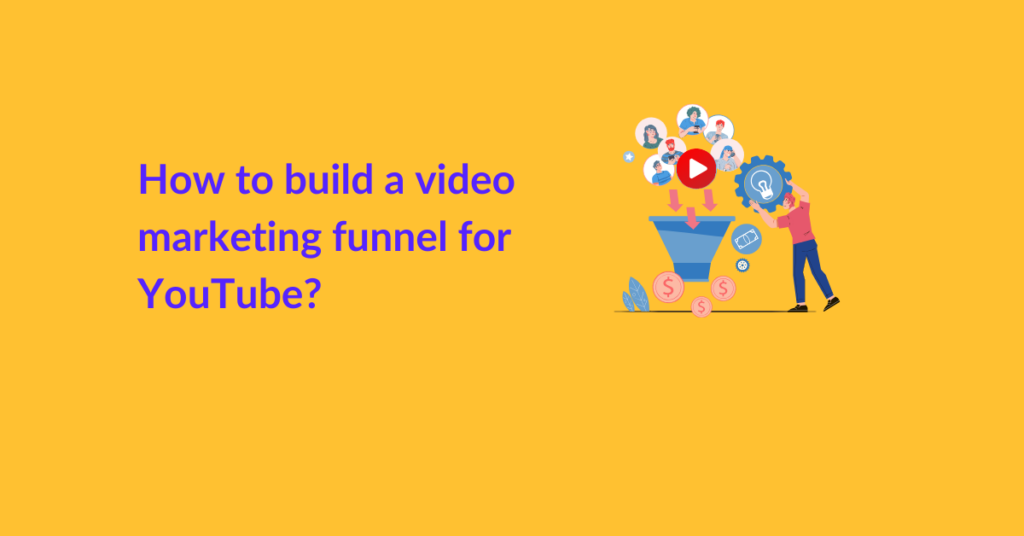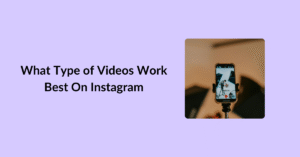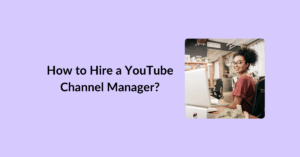Some of the top earners on YouTube are making as much as $56,000 per month. Big, old channels like Mr Beast are hitting figures as high as $1,872,000 per post.
These enormous numbers aren’t just good luck or pure talent. They come from a carefully planned and smart approach.
All the popular YouTubers have a clear plan in place before they share their videos. This plan helps them make the most money from every moment they capture and share with their audience.
In this post, we’ll help you achieve the same. We’ll be providing a step-by-step guide on how to successfully promote your product or service on YouTube and multiply your YouTube earnings!
Let’s dive in!
Table of Contents
Step-by-Step Guide: How to build a video marketing funnel?
If you’re new to video marketing funnels altogether, browse our guide on: What is a video marketing funnel? — Defined by Experts. And then, get back to this one. It’ll make implementation 10x easier!
Step 1: Plan Your Channel
We’re assuming you are just starting out with your YouTube journey. So, the very first step would be to gain clarity on your goals and set up a basic environment. In this step, we’ll help you plan it out:
a) Brand Your Channel
Branding helps people recognize your content in the sea of videos. You know the feeling when they’re scrolling reels, they watch a 2-sec clip, and there’s an instant lightbulb moment ‘oh I know, this is from THAT channel!’ That’s what you want to aim for.
You can make this possible by setting up a consistent:
- Brand palette
- Tone of voice
- Length of videos
- Intent of videos
- Format and design of videos
At editvideo.io, we take this a step further and even maintain consistency in your video edits. For example, if you have a gaming channel —- we make sure the sound effects, transitions, and fonts align with your channel’s vibe. We ensure they are consistent in all your videos.
As a beginner, you can start with the following:
- Channel Banner: Your channel art is like a giant billboard at the top of your channel page. It’s the first thing people see. You can use this space to display your logo or a captivating image that represents your brand. Make it eye-catching and memorable.
- Profile Picture: It could be your business logo or a clear picture of you if you’re the face of your brand. It’s what people will recognize you by.
- About Section: Write a short and sweet description of what your channel is all about. People should know what they can expect from your videos.
- Color Scheme: Choose a color scheme that matches your product or service. Use these colors when designing your channel art, thumbnails, and video graphics.
- Channel Trailer: Make a short video that introduces new visitors to your channel. It’s like a movie trailer but for your content. Show them what they can expect and why they should subscribe.
- Video Thumbnails: Thumbnails are like the book covers of your videos. Make them attention-grabbing and consistent with your brand. This helps viewers recognize your content at a glance. Here are some of the best fonts for YouTube thumbnails btw.
Remember, your YouTube channel serves as your digital storefront. A well-decorated and branded channel will attract more visitors and keep them interested in what you have to offer.
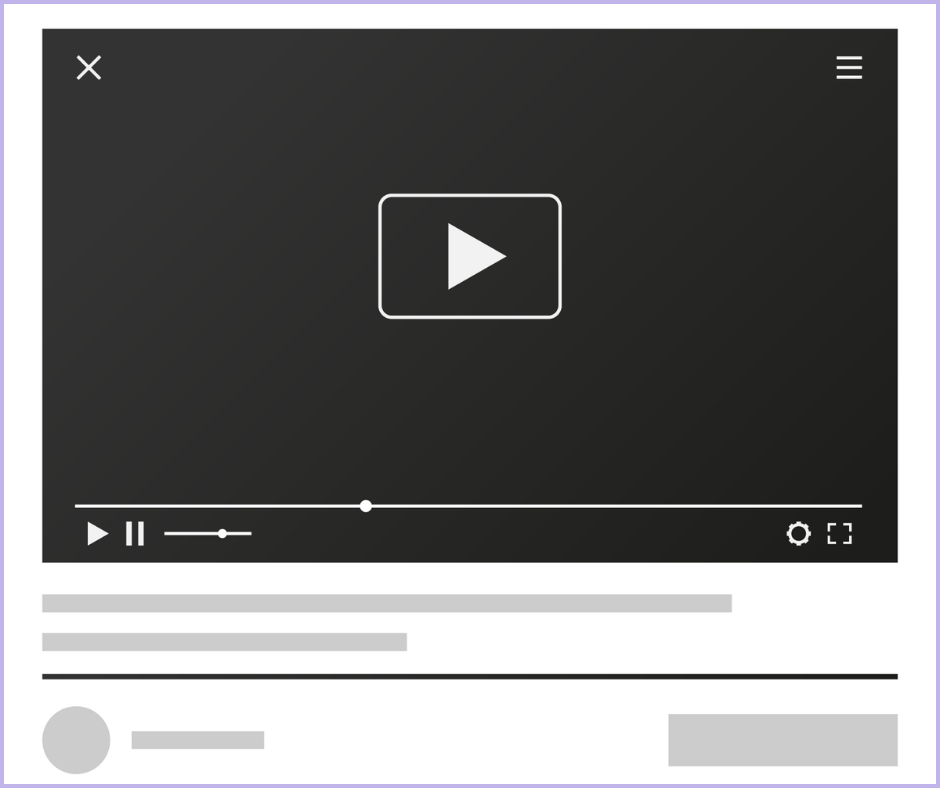
b) Define Your Product/Service and Audience
You can’t make money if you cannot clearly convey what product/service you sell. So, first understand your product/service thoroughly yourself and draft all its details on a document.
You want to be crystal clear about:
- What is it?
- How much is it for?
- Why would people buy it from you? How is it worth their money or time?
Then, communicate the answers to these questions to your audience in the following ways:
- Highlight the Benefits: Start by explaining what your product or service can do for your audience. How does it make their lives better or solve a problem? Make this clear in your videos.
- Show It in Action: Sometimes, seeing is believing. If you can, demonstrate how your product works or showcase the results of your service. People love visual proof.
- Share Your Story: Every product or service has a story behind it. Tell your viewers why you created it and what makes it special. This personal touch can build a connection.
These videos will typically serve as the ‘awareness videos’ if you go by the linear funnel. Or they may be a part of the ‘interest’ stage of your video marketing funnel if you have a complex funnel like the one below:
Learn more here: What is a video marketing funnel?
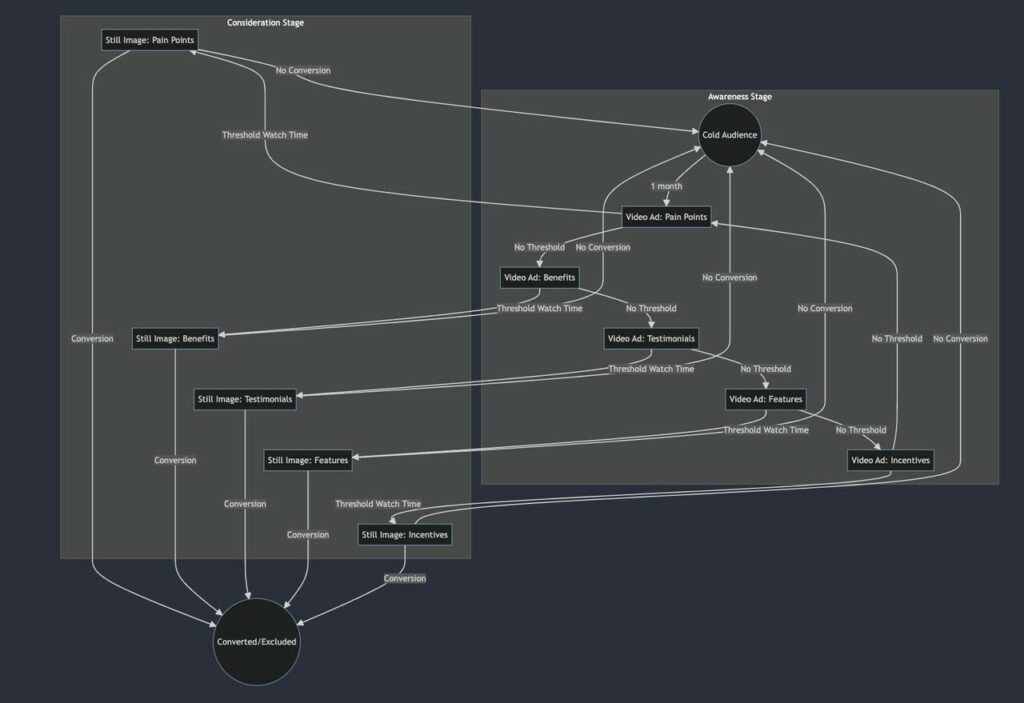
c) Identify Your Target Audience
Now that your product is ready for the spotlight, let’s talk about the people who will love it the most. These are basically people who will benefit the most from your product and you effectively solve one of their major pain points.
How to find them? Start by learning about your competitor’s audience. This will give you real-time insights about your product/service’s ideal customers. What are their interests, problems, and preferences? The more you know, the better you can connect with them.
Next, think of your audience as characters in a story. What are their names, ages, jobs, and hobbies? This helps you imagine who you’re talking to in your videos.
Lastly, conduct surveys online to understand the challenges they face and show how your offering can be their solution.
d) Aligning Audience with Funnel Stages
Now that you know your product and your audience, it’s time to connect the dots. The video marketing funnel demands that you need to guide your audience through the stages like a friendly tour guide.
Here’s a glimpse:
- Create Awareness: In the “Awareness” stage, your job is to introduce your product or service to people who haven’t heard of it before. Create videos that catch their attention and make them curious.
- Build Interest: As your audience moves to the “Interest” stage, provide them with more detailed content. Share videos that showcase the benefits and unique features of what you offer.
- Help Them Decide: When they’re in the “Decision” stage, they’re close to becoming your customers. Share videos that address their final doubts and encourage them to make a decision.
- Guide to Action: The final step is “Action.” This is when your audience decides to buy or use your service. Make sure your videos here include strong calls to action, like “Buy Now” or “Sign Up.” You can even incorporate ads within your videos to promote sales.
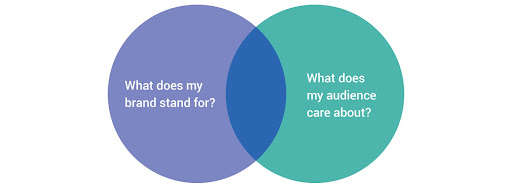
Step 2: Develop a Content Creation Strategy
It’s time to put the plan into action…
a) Select Content Types for Your Audience
Now that you know your product, your audience, and where they are in the funnel, it’s time to create content that speaks to them directly:
- Educational Videos: Teach your audience something related to your product or service. This positions you as an expert in your field.
- Product Demos: Show your product/service in action. Explain how it works and how it benefits your viewers.
- Customer Testimonials: Let happy customers share their experiences. It builds trust and credibility.
- How-To Guides: Create step-by-step guides related to your product or service. It can help your audience understand how to use it.
The largest allocation of your time should be for educational videos. These videos basically hook your audience, satisfy them instantly, and win their trust. So, you need to nail these to push them further into the funnel.
Also, to make your educational videos accessible to a wide range of people, use these tips to improve visibility on YouTube.
b) Create a Content Calendar
Consistency is key on YouTube. A content calendar can help you achieve that.
First, decide how often you’ll upload videos. It could be once a week or more. Create a content calendar that covers a few months in advance.
Next, decide on the types of video content you want to put out. Is it going to be long-form YouTube videos? YouTube shorts? Or a mix of both?
We recommend keeping it a mix of both as it keeps your audience from getting bored. But make sure you consider your audience’s consumption nature. If your audience is too busy, they might not have any time for 30-minute-long videos.
Also, keep in mind the seasons and holidays. Tailor your content to what’s happening in the world.
c) Incorporate Funnel Components into the Content
Remember the funnel stages? Now, let’s fit your content into those stages:
- Awareness: Create teaser videos that introduce your product or service in a fun and intriguing way. Make people curious.
- Interest: In this stage, share in-depth videos that explain how your product or service works and why it’s better than the rest.
- Decision: Offer comparison videos, FAQs, and reviews that help your audience make up their minds.
- Action: Create videos that have strong calls to action, like “Buy Now” buttons or links in the video description.
Now you’re all set to make YouTube work for you and your business. Just remember to keep your audience in mind, create engaging content, and guide them through your video marketing funnel.

Step 3: Video Production and Optimization
Now, to begin creating videos for your YouTube channel, you needn’t break the bank. You can start with basic equipment and free software:
- Camera: A good smartphone with a high-quality camera is often enough to start (iPhone is great for cinematic shots!). If you want more, consider affordable digital cameras.
- Lighting: Natural light works great. You can also use inexpensive LED lights to brighten up your shots.
- Microphone: For clear audio, invest in an external microphone. They can be affordable and make a big difference.
- Editing Software: Free software like iMovie (for Mac) or DaVinci Resolve can help you edit your videos. They’re user-friendly and great for beginners.
If you want to scale quickly, consider outsourcing video editing to reliable and professional editors. We don’t recommend opting for freelancers — they can mess up your quality and consistency. Opt for a service, so you can have a dedicated video editor.To make your videos discoverable, you need to have a good command of YouTube SEO. Click on the linked guide to learn what elements to optimize and how.
Step 4: Build Your Audience
Getting people to subscribe to your channel is a big step. Here’s how to do it:
- Ask Nicely: Encourage viewers to subscribe at the beginning or end of your video. Remind them why they should.
- Consistent Posting: Stick to a regular schedule. When people know when to expect your content, they’re more likely to subscribe.
Also – a channel trailer will benefit you like nothing else. It tells new visitors what your channel is about and reduces friction. People are more likely to subscribe.
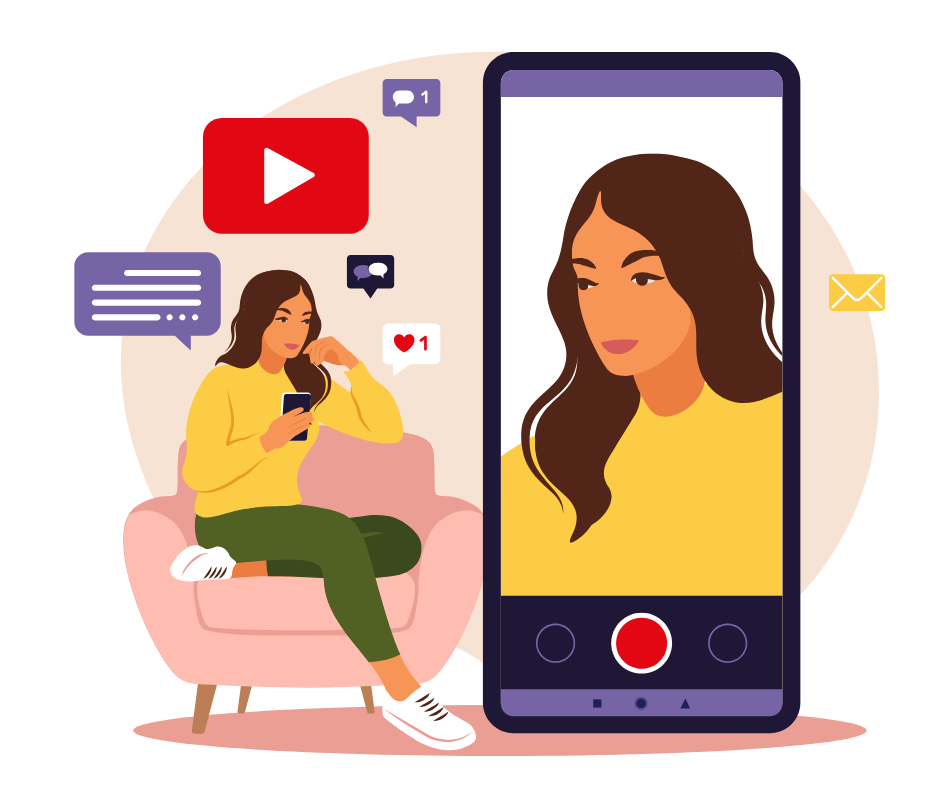
Step 5: Engage with Your Community
Once you have a few viewers and subscribers, start engaging with them to build a loyal community. You can do it by:
- Reply to comments on your videos. Answer questions, thank people for their feedback, and show you care.
- Host live sessions where you can interact with your audience in real time. It’s a great way to connect.
- Ask your audience what they want to see next. It makes them feel involved in your channel.
At every step of the way, make sure you incorporate powerful CTAs, such as subscribe, like, share, and visit your website.
Step 6: Promote and Distribute
Posting on YouTube alone won’t be enough. The YouTube algorithm keeps on updating. And as someone who’s new to the platform, it can be challenging to deal with it.
So, consider expanding your reach by sharing videos on other social media platforms:
- Share Teasers: Post short video snippets or teasers on platforms like Facebook, Instagram, and Twitter to generate interest.
- Engage in Communities: Join online groups or communities related to your content. Share your videos and interact with members.
- Collaborate with Other Creators: Work with other YouTubers for cross-promotion. They share your videos, and you do the same for them.
Apart from collaborating with other creators, you can seek sponsorship opportunities. Brands will pay you for this content!
Suggest read: How much do sponsorships pay YouTubers?
You can also leverage email marketing to keep your audience engaged:
- Build an Email List: Collect emails from your viewers who want updates and exclusive content.
- Regular Newsletters: Send out regular newsletters with video highlights, behind-the-scenes stories, and special offers.
- Exclusive Content: Give your email subscribers access to exclusive content, like early video releases or discounts on your products.
Notice that promoting or distributing of your content is basically an effort for the ‘Interest’ and ‘Desire’ stage of your video marketing funnel. Without this, you cannot retarget ideal customers that you failed to hook in your first interaction with them. You can’t also reach newer people without this step.
Step 7: Monitoring and Analytics
When you launch a channel, you get access to YouTube Studio. Within this, dashboard you have YouTube analytics — which can give you valuable insights about your audience and videos.
To access YouTube analytics, go to your YouTube Studio and click on the “Analytics” tab. There, you’ll find all sorts of data about your channel. You can observe your audience demographics in deep detail and see who’s watching your videos – their age, gender, location, and more. Analytics also reveals where your viewers are coming from, like YouTube searches, suggested videos, or external sites.
Use this information to determine if your videos are generating the intended outcome or not. For example, if you published a video for awareness, it should have lots of views and comments from your desired location. If pushing them from the interest to the desire stage was the target, they should be clicking on a CTA. Be it a subscribe button, website link, or leaving their email address.
Some other metrics you can track are:
- Watch Time: It’s one of the most important KPIs. It tells you how long people are watching your videos. Longer watch times are usually better.
- Views: The number of times your video has been watched.
- Subscribers: The number of people who hit the subscribe button after watching your content.
- Click-Through Rate (CTR): It shows how often people click on your video when they see it. A higher CTR is great.
- Engagement: Look at likes, comments, and shares. The more, the better.
- Retention: It tells you when viewers stop watching your video. High retention is a good sign.
Remember, key performance indicators are like signposts showing you the way. Keep an eye on these metrics to understand how your channel is doing.
Step 8: Adjust Your Strategy Based on Data
As mentioned earlier, data is your guide. Use the data to fine-tune your video marketing funnel.
- Video Performance Analysis: Identify which videos are doing well and why. Is it the topic, the length, or the time of release?
- Audience Insights: Check out who’s watching your videos. If they’re from a certain location or age group, consider creating content tailored to them.
- Keyword Analysis: See which keywords are driving viewers to your videos. You can use this to optimize future content.
- Content Calendar Adjustments: Use data to refine your content schedule. If you see that certain days or times get more views, schedule your videos accordingly.
- A/B Testing: Experiment with different video elements like thumbnails, titles, or content styles. Analytics will show you which changes work best.
- Set Goals: Define what success looks like for your channel. Is it more subscribers, higher watch time, or increased engagement? Use data to track your progress toward those goals.
Remember, the data in YouTube Analytics guides you to where the real treasures are – a growing channel and an engaged audience. Use this information to adjust your strategy and keep improving your content.
Step 9: Implement Conversion Strategies
Alright, so far we’ve focused on elements of the Awareness, Interest, and Desire stage. Now that you’ve done enough work for those parts of your video marketing funnel, it’s time to focus on the last stage — which is action.
You need to push the user to actually purchase your product/service. Here are a few ways to do it right:
a) Create Landing Pages
If you have an established website, redirect your audience from YouTube to the website. And when you do, make sure it has the following elements:
- Clear Purpose: Make sure your landing page has a clear and single goal. It might be to sell a product, collect emails, or something else.
- Compelling Copy: Write persuasive text that tells visitors what’s in it for them. Why should they take the action you want them to?
- Strong Call to Action: Use a powerful CTA button. It should be attention-grabbing, like “Get Started Now” or “Claim Your Discount.”
You can include links to your landing pages, social media, or other relevant content in your video descriptions.
b) Build an Email List
Building an email list is a direct way to communicate with your most dedicated audience. A few ways to build it are as follows:
- Sign-Up Forms: Place sign-up forms on your landing pages and in the video descriptions. Encourage viewers to join your mailing list.
- Incentives: Offer something valuable in exchange for email addresses. It could be a free ebook, exclusive content, or discounts.
- Engaging Content: Keep your subscribers interested by sending them valuable and relevant content regularly.
Step 10: Build Loyalty and Retention
Your relationship with your customers (or ideal customers) doesn’t come to an end when they make a purchase. In fact, when they make a purchase, you have an opportunity to convert them into repeat customers or strong brand advocates.
You can do it by:
- Posting content consistently. It builds trust and loyalty.
- Reward your subscribers with exclusive videos, discounts, or early access.
- Encourage your audience to share their thoughts and ideas. It shows you value their input.
Also, never stop being authentic and transparent. If you make a mistake, admit it. Honesty builds credibility. And trust built via honesty goes a long way!
You can further enhance the effectiveness of your funnel by segmenting the email list into different groups based on interests or behaviors. This helps you send more relevant content.
End Note
Before we close this post — here’s one more thing you need to know: You can use YouTube as both a ‘marketing tool’ and a ‘product’.
The video marketing funnel you develop will basically help you use YouTube as a marketing tool. And the content you post there is your product.
Sell the product by monetizing your channel. It will help you generate some extra cash. If you’re up for it, hop onto this guide: How to monetize your YouTube channel?

